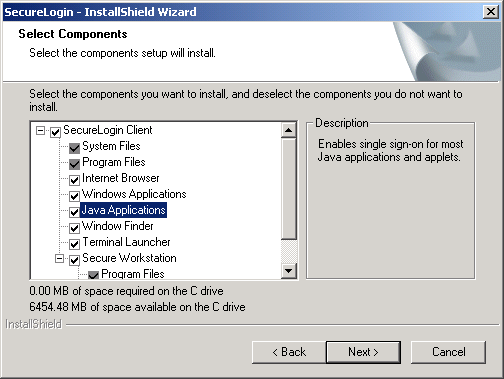Enabling Applications for Single Sign-On
If a pop-up prompt doesn't appear when you launch a new application, use the Add Application Wizard to enable the application for single sign-on. The Wizard creates a script that captures your login credentials. The next time that you launch the application, SecureLogin uses the script to automatically log you in.
Enabling Applications That Have Prebuilt Scripts
Scripts store certain login information so that it can be used again and again. To save you the time and trouble of setting up scripts, SecureLogin provides prebuilt scripts for many applications.
To enable an application that has a prebuilt script:
-
Right-click the SecureLogin icon on the task bar, then click Add Applications.
-
In the Welcome window, click Next.
-
Click Prebuilt Scripts, then click Next.
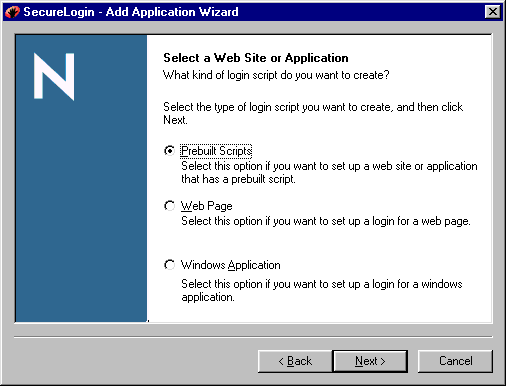
-
Select the application from the list, then click Finish.
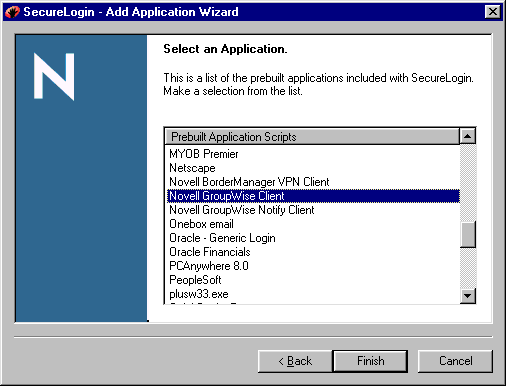
-
Provide a login (user ID).
As the following figure illustrates, when you next launch the application, SecureLogin prompts you to enter login variables.
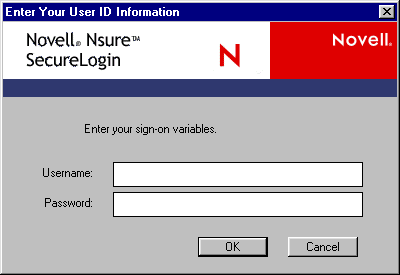
After you type the variables (typically, Username and Password) and click OK, SecureLogin saves this data and logs you in. This data is a user ID. For subsequent launches, SecureLogin uses this user ID to automatically log you in.
Enabling Applications That Don't Have Prebuilt Scripts
This section provides information on the following:
Enabling a Windows Application
The following steps apply when SecureLogin doesn't automatically detect a new application. If SecureLogin detects a new application and launches the Add Application Wizard, go to Step 6. For information on SecureLogin's pop-up prompt, see Responding to Pop-Up Prompts.
-
Launch the application and drag the login panel to one side of the screen.
-
Type login information (for example, username and password), but don't click OK, Next, or Finish.
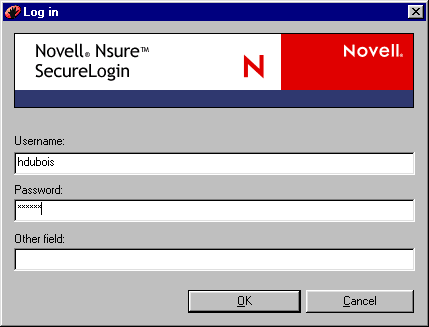
The login panel needs to remain so that SecureLogin can capture the information on the panel.
-
Right-click the SecureLogin icon on the task bar, then click Add Applications.
-
Click Next > Windows Application > Next.
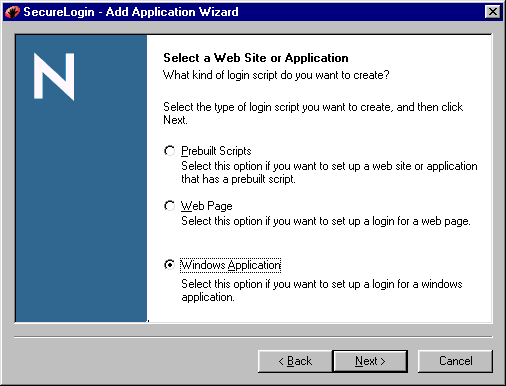
-
Drag the hand icon from the Set Up a Windows Application dialog box to the title bar of the login window.
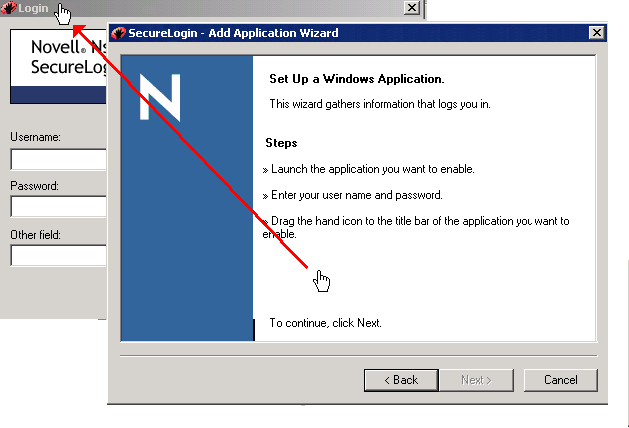
-
In the Select Window Function window, select Login Window from the drop-down list, then click Next.
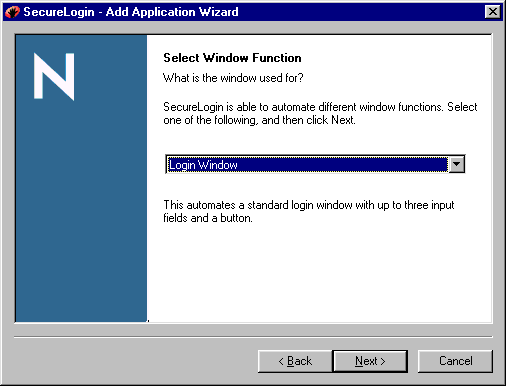
-
Select the login fields.
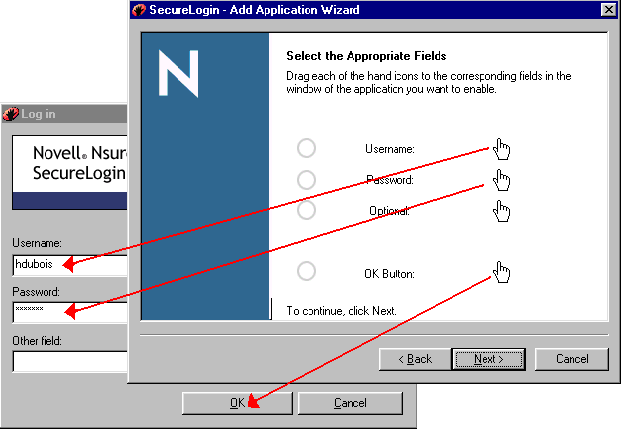
-
Drag the hand icons and drop them onto the corresponding Username, Password, and (if appropriate) Other fields in the login window.
-
Drag the hand icon for the OK button and drop it onto the OK, Next, Continue, or similar button.
-
Click Next.
-
In the Confirm Details dialog box, verify that your username is correct and that a password exists, then click Next.
-
In the Name the Script window, accept the default name (or select a name from the drop-down list or type a new name) for the application, then click Finish.
Enabling a Web Application
-
From a browser, go to the URL of the Web page that you want to log in to.
-
Right-click the SecureLogin icon on the task bar, then click Add Applications.
-
Click Next > Web Page > Next.
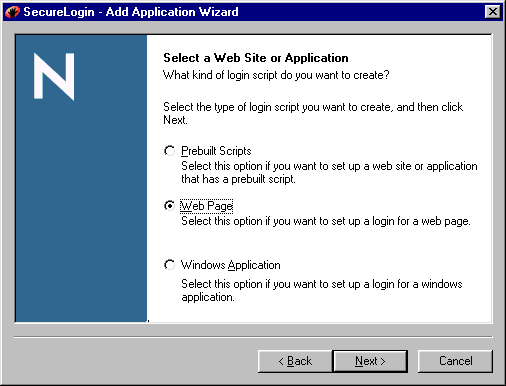
-
In the Set Up a Web Page dialog box, copy and paste the URL, type your username and password, then click Finish.
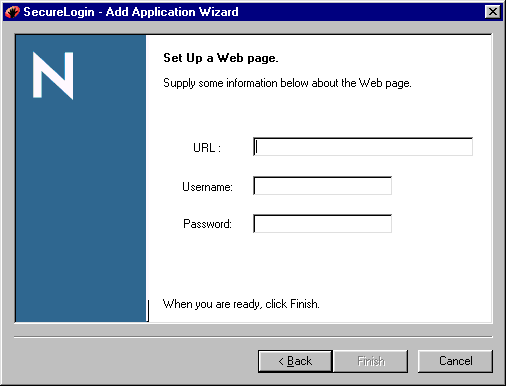
Enabling a Java Application
If Java applications are coded in AWT or SWING, SecureLogin can enable those applications for single sign-on.
A script requires control numbers (hidden numbers that differentiate a Username edit box from a Password edit box). Determining the correct control numbers in a Java application might require trial and error. Therefore, we recommend that the network administrator configure Java applications centrally, test the applications, and then distribute them.
Prerequisites
Enabling the Add Applications Wizard for Java
When the JRE is installed, the SecureLogin installation program installs Java support by default. However, when SecureLogin first launches, the Add Application Wizard for Java is disabled. To use Java applications, you must enable the Add Applications Wizard for Java.
-
Right-click the SecureLogin icon on the task bar, select Manage Logins, then click Settings.
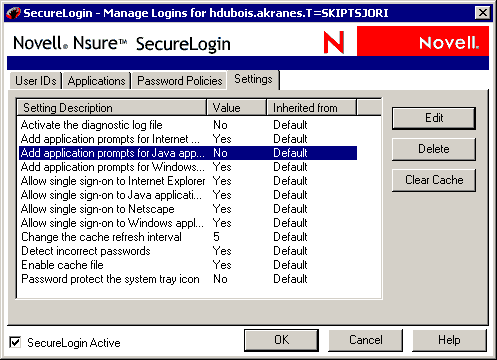
-
Select Add Application Prompts for Java Applications, then click Edit.
-
Change the value to Yes, then click OK.
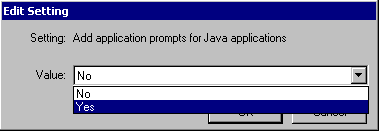
-
Set the Allow Single Sign-on to Java Applications value to Yes.
-
Save the data by clicking OK.
Adding the Java Application to the List of Applications
-
Launch the Java application.
The Java application can be an applet or an executable file. The application displays a login dialog box.
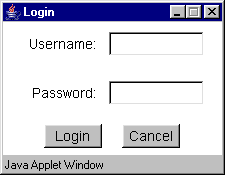
SecureLogin displays the following message:

-
Click Yes.
SecureLogin extracts and stores the Java control information for login to the application or server.
-
Double-click the SecureLogin icon on the task bar, then select Applications.
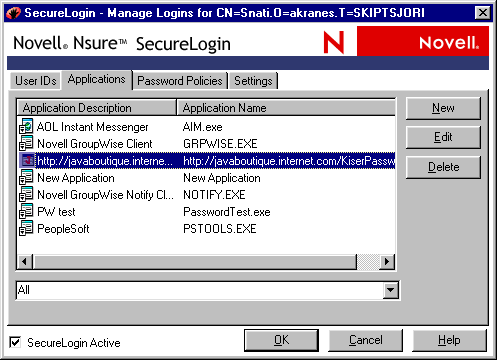
SecureLogin displays a new icon (Java) and application type (in this example, http://javaboutique).
-
Select the Java application, click Edit, then click Script.
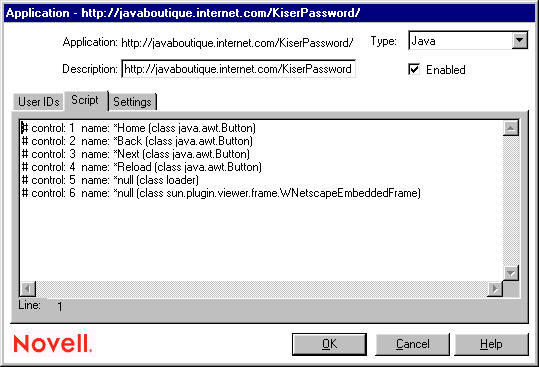
The Description field displays the application's address. The Script tab displays the Java control information that SecureLogin extracted from the Java login. The following table describes part of the example script:
#control 1: |
The Username field |
#control 2: |
The Password field |
#control 3: |
The Login button |
-
Modify the script by typing the commands and control numbers that enable SecureLogin to automatically log you in to the application.
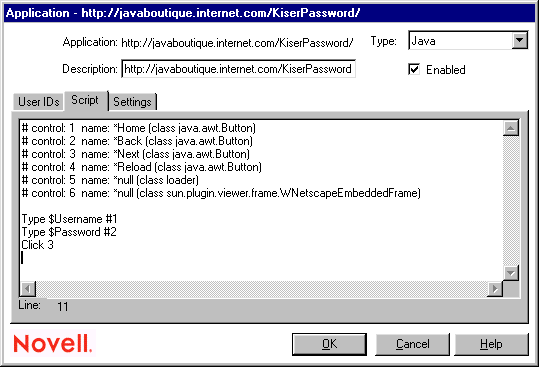
Determining the control numbers might require trial and error.
-
Save the single-sign-on information by clicking OK twice.
-
Test the Java application by launching it and logging in.










